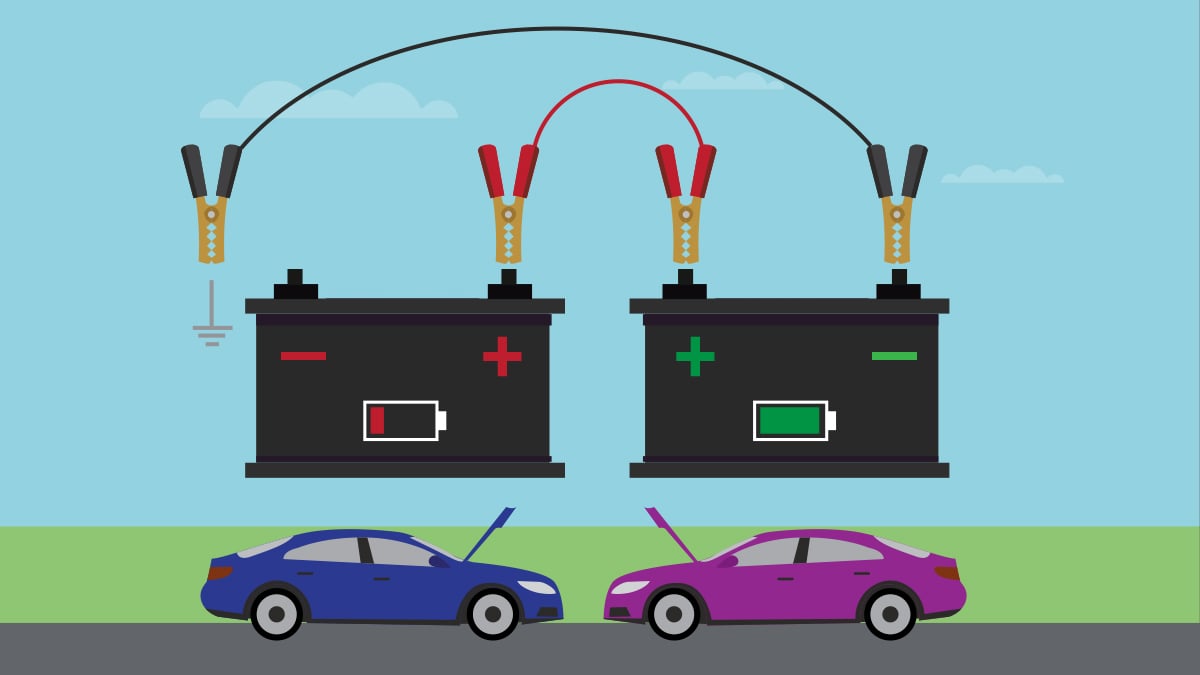
A dead car battery can happen to anyone, anywhere, at any time. Learning how to jump start a car is a valuable skill that can help you get back on the road quickly and safely. Whether you’re stranded in a parking lot or helping out a friend in need, knowing the proper steps to jump start a car can save you time, money, and frustration. In this step-by-step guide, we’ll walk you through the process of jump starting a car safely and effectively.
Table of Contents
1. Gather Your Tools
Before you begin, gather the following tools and equipment:
- Jumper cables: Make sure you have a set of heavy-duty jumper cables in good condition.
- Another vehicle: You’ll need another vehicle with a working battery to jump start your car.
2. Position the Vehicles
Park the vehicles close enough to each other so that the jumper cables can reach both batteries but far enough apart that they won’t touch. Turn off the ignition and set the parking brakes on both vehicles.
3. Identify the Batteries
Locate the batteries in both https://www.terribleanalogies.com/. They are usually found under the hood, although the exact location may vary depending on the make and model of the car. Identify the positive (+) and negative (-) terminals on each battery.
4. Connect the Jumper Cables
Follow these steps to connect the jumper cables properly:
- Connect the red cable: Start by connecting one end of the red (positive) jumper cable to the positive terminal of the dead battery (marked with a “+” sign).
- Connect the other end of the red cable: Connect the other end of the red cable to the positive terminal of the working battery.
- Connect the black cable: Next, connect one end of the black (negative) jumper cable to the negative terminal of the working battery (marked with a “-” sign).
- Connect the other end of the black cable: Finally, connect the other end of the black cable to a metal surface on the engine block of the dead car, away from the battery. This serves as a ground connection.
5. Start the Working Vehicle
Start the engine of the working vehicle and let it run for a few minutes to charge the dead battery.
6. Start the Dead Vehicle
After allowing the working vehicle to run for a few minutes, try starting the engine of the dead vehicle. If it starts successfully, let both vehicles run for a few more minutes to ensure the battery is charged.
7. Disconnect the Jumper Cables
Once the dead vehicle is running smoothly, carefully disconnect the jumper cables in the reverse order of how they were connected:
- Remove the black jumper cable from the engine block of the dead car.
- Remove the black jumper cable from the negative terminal of the working battery.
- Remove the red jumper cable from the positive terminal of the working battery.
- Finally, remove the red jumper cable from the positive terminal of the dead battery.
8. Take Precautions
When jump starting a car, remember to take the following precautions:
- Wear safety glasses: Protect your eyes from sparks and battery acid by wearing safety glasses.
- Avoid touching metal surfaces: Keep the jumper cables away from metal surfaces to prevent sparks.
- Keep the engines running: Once the dead car is started, keep both engines running for a few minutes to allow the battery to recharge.
Conclusion
Jump starting a car is a simple yet essential skill that can help you get back on the road quickly and safely in the event of a dead battery. By following these steps and taking necessary precautions, you can jump start a car with confidence and ease, ensuring a smooth and stress-free experience.


:max_bytes(150000):strip_icc()/__opt__aboutcom__coeus__resources__content_migration__serious_eats__seriouseats.com__2019__07__20190619-korean-bbq-vicky-wasik-19-3287ef78b80f43bbb0c4694549bc6edd.jpg)
